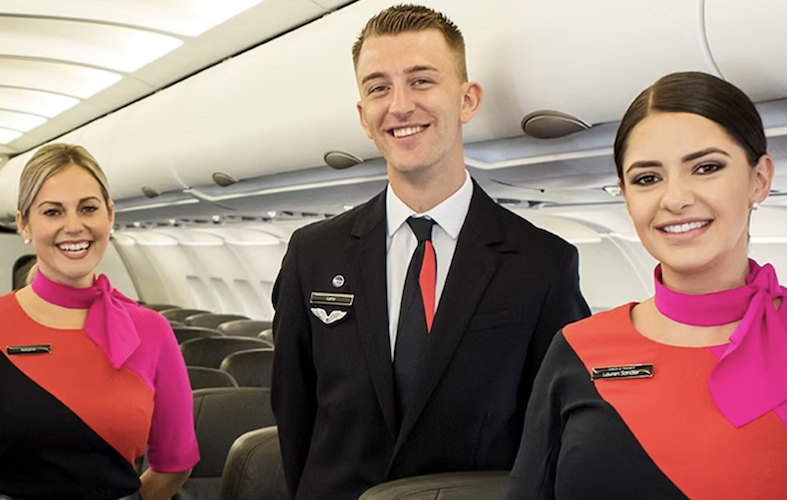Access selected deals available with budget and full-service airlines
Lock any airfare that sounds great. You don’t lose anything if you cancel it
Call us anytime for any assistance. We do not go into hibernation
Your personal and financial information stays secure with us
Qantas Airways Limited, commonly known as Qantas, is Australia’s flag carrier and one of the world’s oldest and most respected airlines, celebrated for its safety, reliability, and iconic “Spirit of Australia” identity. Headquartered in Mascot, Sydney, adjacent to its primary hub at Sydney Kingsford Smith Airport (SYD), Qantas operates an extensive network through its mainline operations and subsidiaries, including the low-cost carrier Jetstar. Below is a comprehensive overview of Qantas’ history, operations, fleet, services, challenges, and future outlook.

Qantas, originally Queensland and Northern Territory Aerial Services Limited, was founded on November 16, 1920, by Australian Flying Corps veterans Paul McGinness, Hudson Fysh, and Fergus McMaster in Winton, Queensland. Registered in Brisbane, Qantas began with two open-cabin biplanes, offering joyrides, air taxi services, and mail delivery in outback Queensland. The airline relocated to Longreach in 1921 and secured a government contract for the Charleville–Cloncurry mail service in 1922, marking the start of scheduled flights. In 1934, Qantas partnered with Imperial Airways to form Qantas Empire Airways (QEA), launching its first international flight from Brisbane to Singapore in 1935 using DH86 aircraft.
During World War II, Qantas continued limited operations despite aircraft requisitions by the Royal Australian Air Force, maintaining services to Singapore and starting flights to New Zealand in 1940 via Tasman Empire Airways Limited (TEAL), partially owned by Qantas. The iconic “Kangaroo Route” from Sydney to Karachi began in 1944, connecting to BOAC’s service to London. Qantas was nationalized in 1947 under Prime Minister Ben Chifley, transferring its domestic Queensland network to Trans-Australia Airlines and focusing on international routes, including Tokyo. Privatization occurred in 1995, enabling Qantas to expand its global presence.
Key milestones include the introduction of Boeing 747s in 1971, the first nonstop Australia–Britain flight from Perth to London in 2018, and the longest commercial flight to date, a 19-hour, 20-minute New York–Sydney route in October 2019 using a Boeing 787-9 Dreamliner. The COVID-19 pandemic forced Qantas to suspend 60% of domestic flights, all international services, and ground over 150 aircraft in March 2020, resulting in 6,000 job cuts and a A$1.9 billion capital raise. Qantas retired its last Boeing 747 in July 2020 after 49 years. In 2022, Qantas announced Project Sunrise, ordering 12 Airbus A350-1000s for nonstop flights from Sydney to New York and London starting in late 2025, aiming to overcome the “tyranny of distance.”
As of November 2024, the Qantas Group operates 308 aircraft, including 85 Jetstar aircraft, 90 QantasLink aircraft, and eight Express Freighters Australia aircraft for Qantas Freight. The mainline Qantas fleet includes Airbus A380s, A330s, A220s, Boeing 787-9 Dreamliners, and Boeing 737-800s, with an average age of around 12 years. QantasLink operates regional routes with Bombardier Dash 8s and Airbus A320s, while Network Aviation, a Perth-based subsidiary, supports Western Australia operations. Qantas has ordered 12 A350-1000s for Project Sunrise, with deliveries starting in 2025, and plans to acquire 20–30 additional single-aisle and widebody aircraft by 2037.
Qantas serves over 100 destinations in 26 countries across Asia-Pacific, the Americas, Europe, Africa, and Antarctica, including over 60 domestic destinations in Australia. Major hubs are Sydney (SYD), Melbourne (MEL), Brisbane (BNE), and Perth (PER), with Perth serving as a transit point for European routes like Sydney–Paris and Sydney–Rome. Qantas operates unique domestic-international hybrid flights (e.g., QF33/QF34 Sydney–Perth–Paris), allowing domestic passengers to bypass customs with an orange “D” sticker. The airline’s network covers 90% of Australia’s passenger demand through its own services and partnerships, including codeshares with American Airlines, Qatar Airways, Cathay Pacific, and others. New routes announced in 2025 include Perth to Auckland and Johannesburg, starting December 2025, using Airbus A330-200s.
Qantas Freight is a leading air cargo operator, while subsidiaries like Qantas Holidays and Qantas Insurance expand its portfolio. The airline is a founding member of the Oneworld alliance, enhancing connectivity with partners like British Airways and American Airlines.